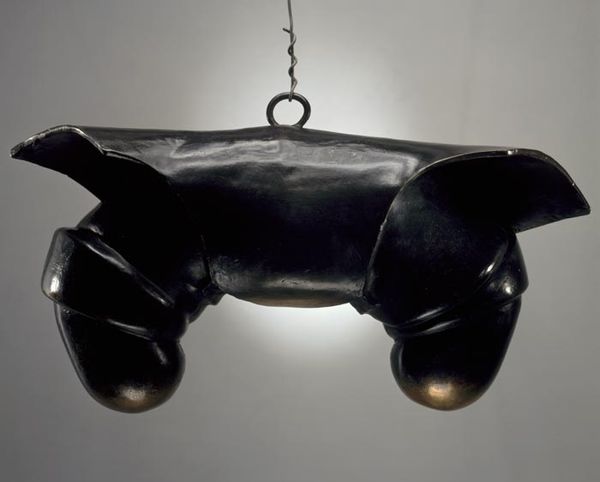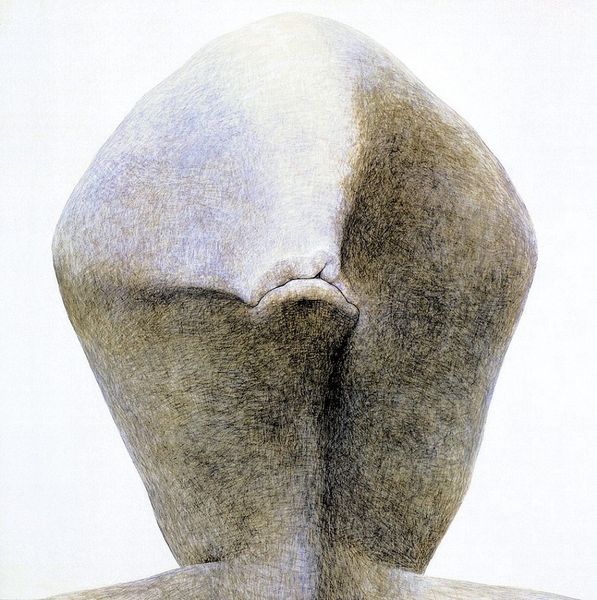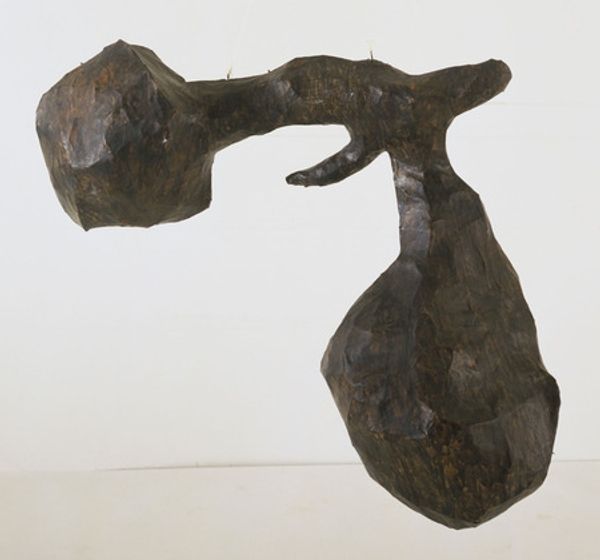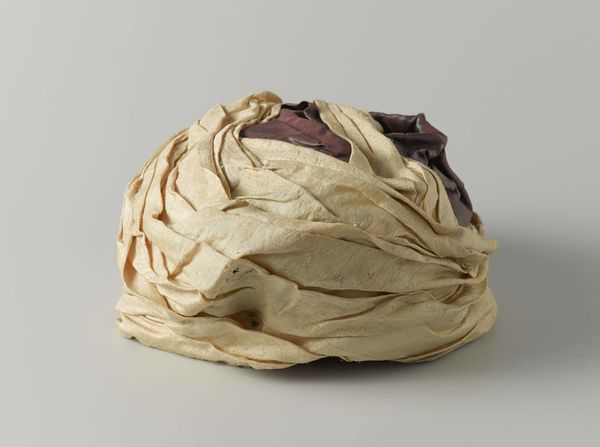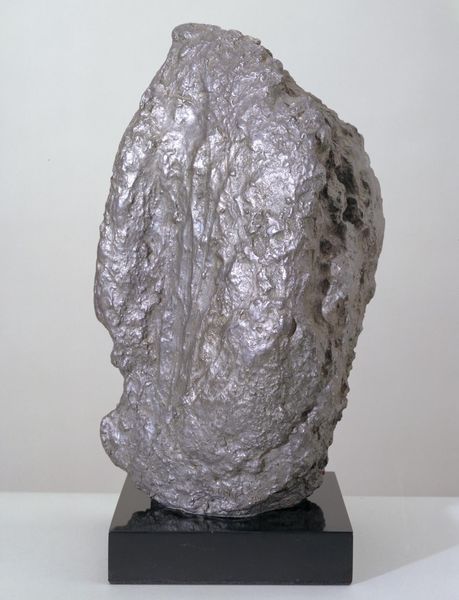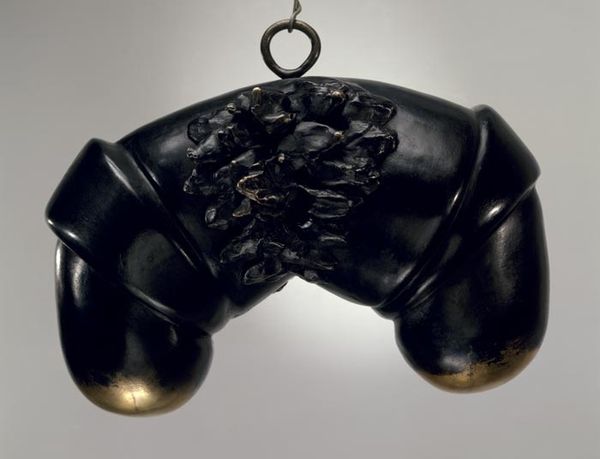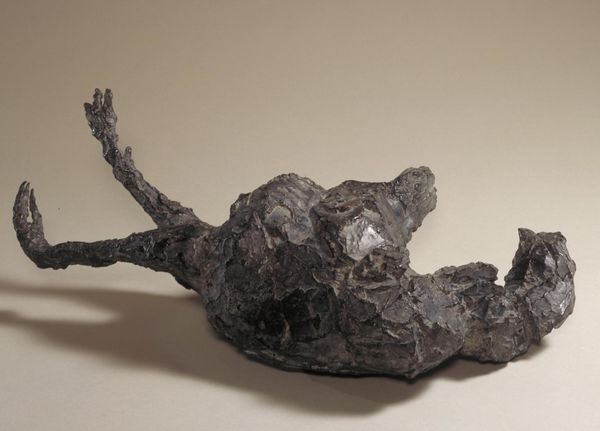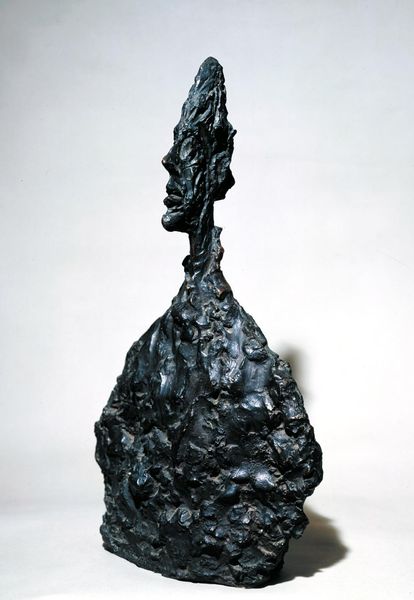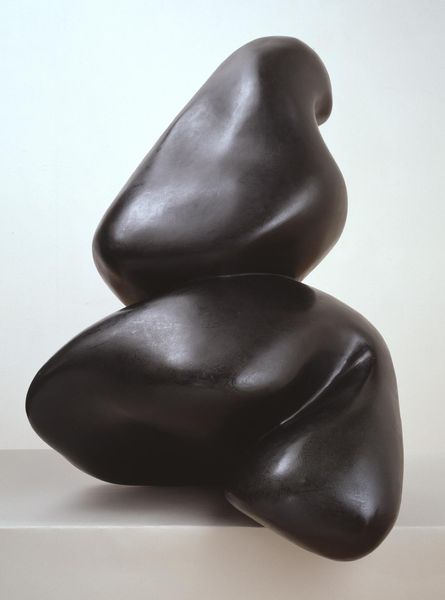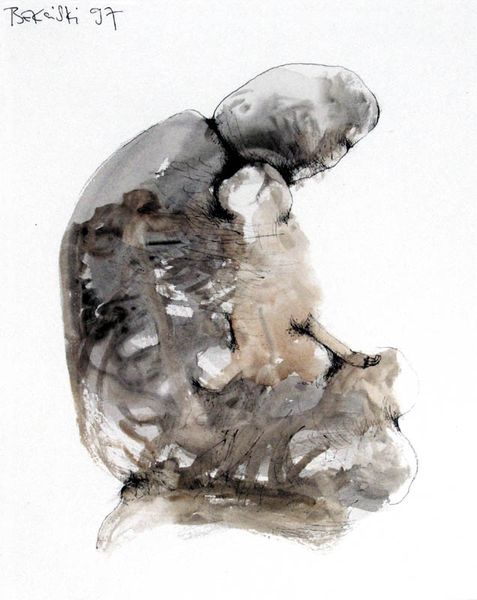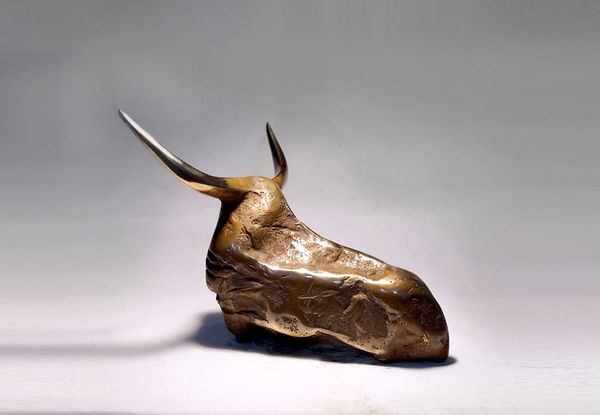
bronze, sculpture
#
abstract-expressionism
#
organic
#
sculpture
#
bronze
#
form
#
sculpture
#
abstraction
#
modernism
Copyright: Louise Bourgeois,Fair Use
Curator: Louise Bourgeois’ "Janus Fleuri," conceived in 1968, offers a fascinating exploration of form and identity. This bronze sculpture encapsulates many of the themes Bourgeois grappled with throughout her career: the body, sexuality, and the complexities of human relationships. Editor: The surface has an almost slick, unsettling sheen. It’s smooth in parts, contrasting with rougher, more textured areas. It definitely feels weighty, dense, like there’s an implied force behind the object. What strikes me is the material’s role; it is meant to capture the essence of something very raw and embodied. Curator: Absolutely. Bourgeois often explored her personal history and anxieties through overtly sexualized forms, particularly those related to female anatomy. In light of the sexual revolution occurring during its conception, this work stands out as an assertion of female subjectivity within a traditionally patriarchal artistic sphere. The title "Janus Fleuri", references the Roman god of beginnings and transitions; consider its intersection with her personal and broader sociopolitical environment. Editor: What interests me about Bourgeois’ process, in regards to feminist critique, is the tactile engagement with the medium of bronze, traditionally cast in a hot process. It is a labor of both forming and destruction. There's something subversive about reclaiming this material process while simultaneously hinting at the construction of female identity within domestic labor. She takes what is expected, monumentalizes something interior and often demeaned, highlighting a tension inherent to patriarchal consumption. Curator: It is crucial to consider the ways in which "Janus Fleuri" contributes to conversations around identity. It presents viewers with complex questions about femininity, societal expectation, and, moreover, lived experiences. It challenges norms. Editor: Seeing how labor transforms a raw material like bronze, that really changes my perspective on Bourgeois' choices. It seems like a profound artistic intervention with very complicated emotional repercussions, doesn’t it? Curator: Exactly! Viewing “Janus Fleuri” from an intersectional perspective enriches our grasp of its commentary on femininity. Editor: For me, the sculpture transforms when seen as the outcome of labor, offering a fascinating and potent intersection.
Comments
No comments
Be the first to comment and join the conversation on the ultimate creative platform.

